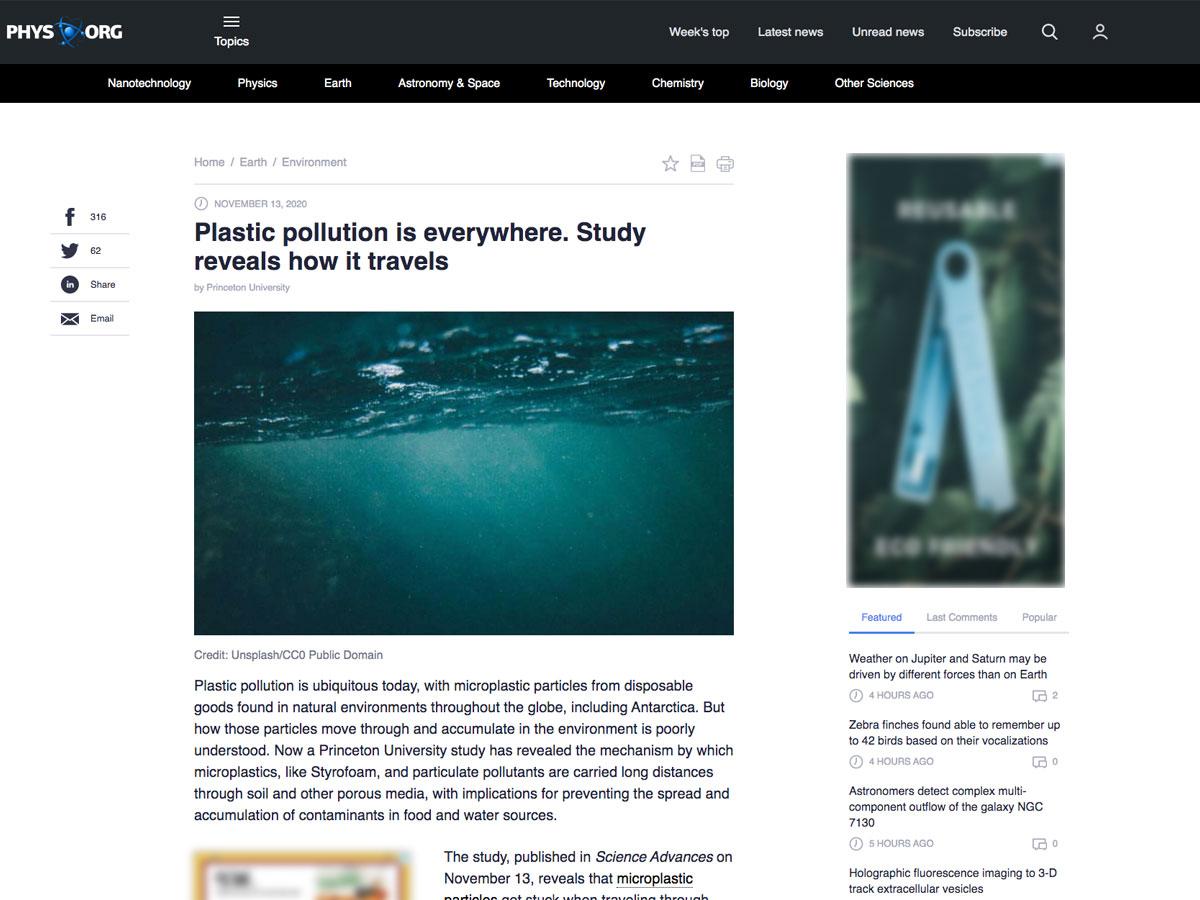Plastic pollution is ubiquitous today, with microplastic particles from disposable goods found in natural environments throughout the globe, including Antarctica. But how those particles move through and accumulate in the environment is poorly understood. Now a Princeton University study has revealed the mechanism by which microplastics, like Styrofoam, and particulate pollutants are carried long distances through soil and other porous media, with implications for preventing the spread and accumulation of contaminants in food and water sources.
The study, published in Science Advances on November 13, reveals that microplastic particles get stuck when traveling through porous materials such as soil and sediment but later break free and often continue to move substantially further. Identifying this stop-and-restart process and the conditions that control it is new, said Sujit Datta, assistant professor of chemical and biological engineering and associated faculty of the Andlinger Center for Energy and the Environment, the High Meadows Environmental Institute and the Princeton Institute for the Science and Technology of Materials. Previously, researchers thought that when microparticles got stuck, they generally stayed there, which limited understanding of particle spread.
